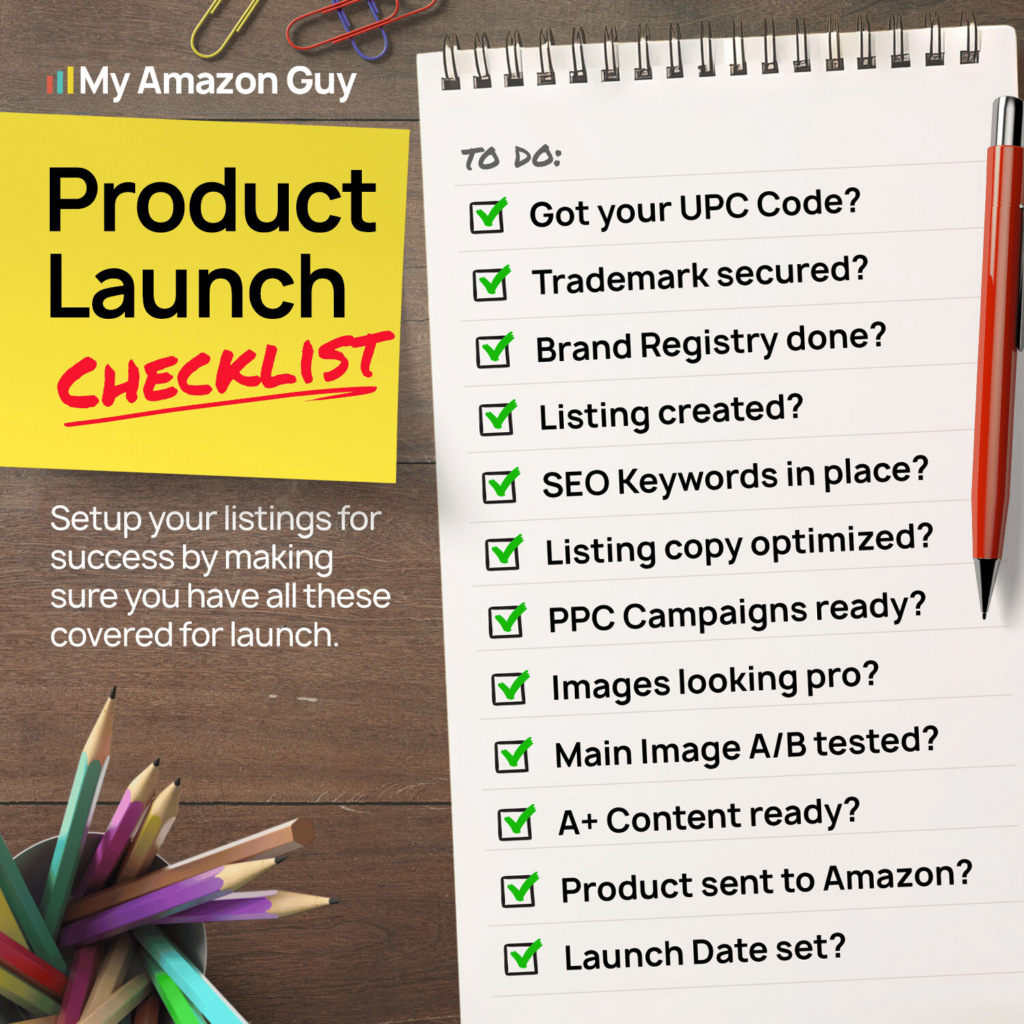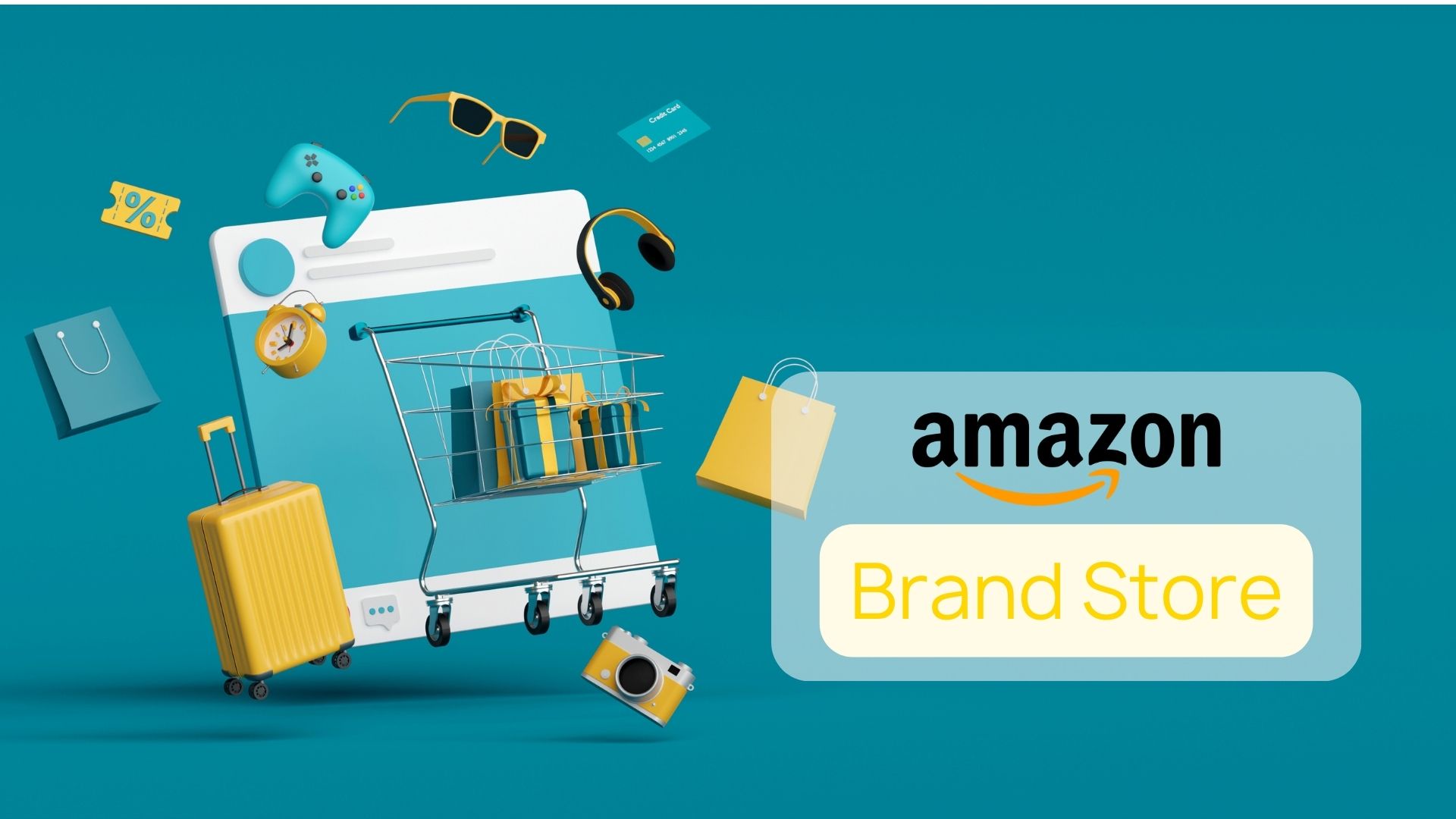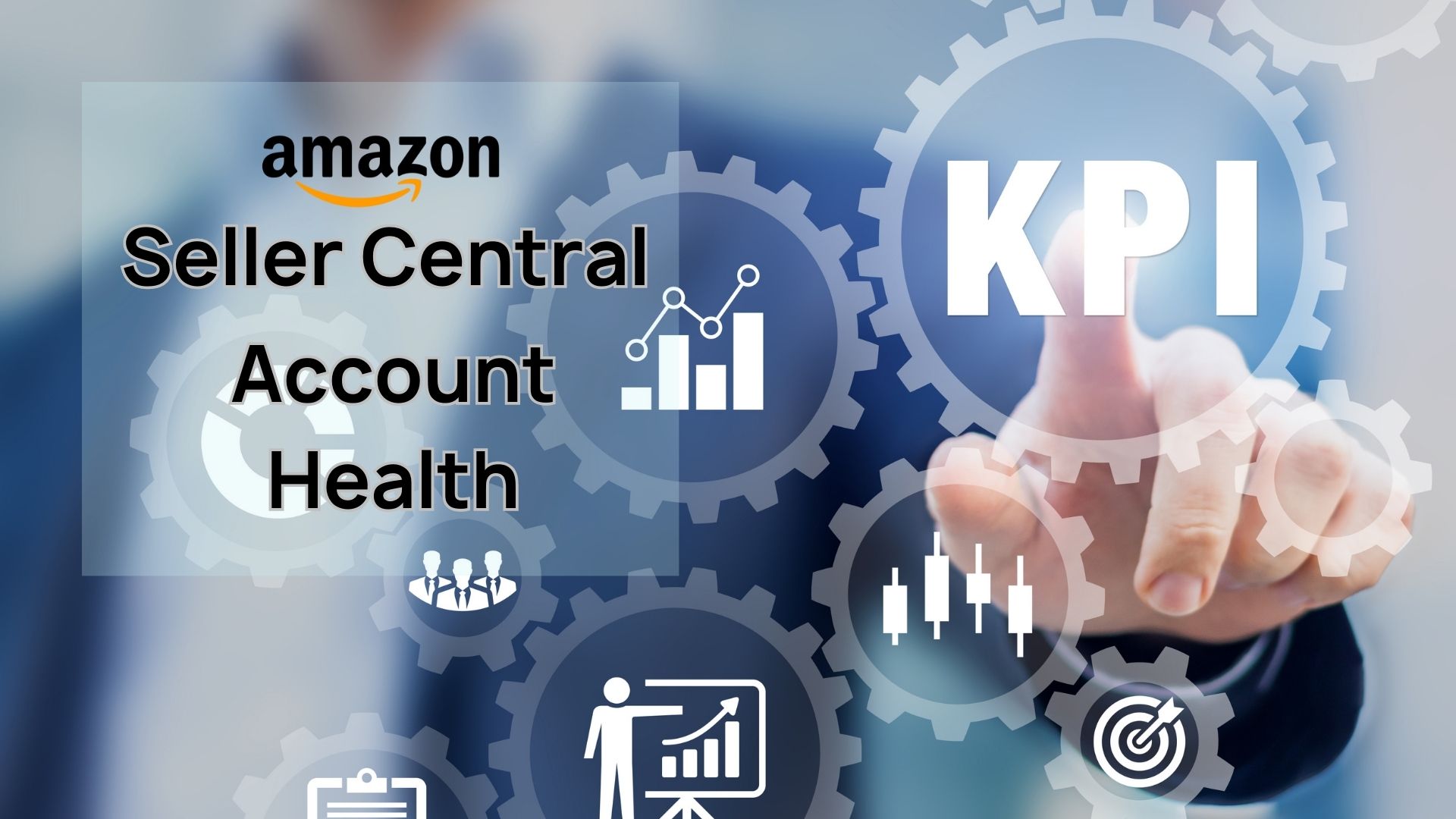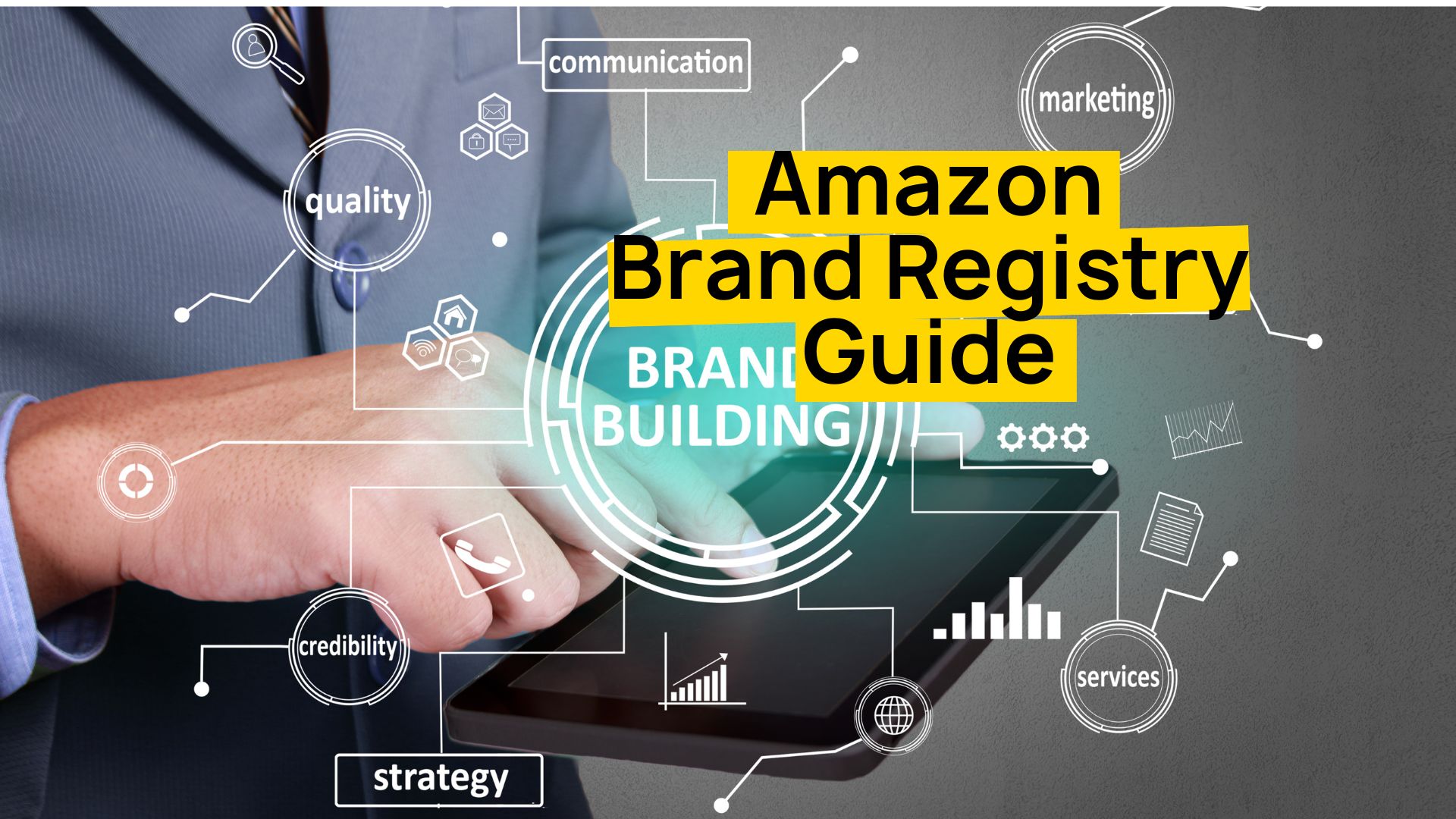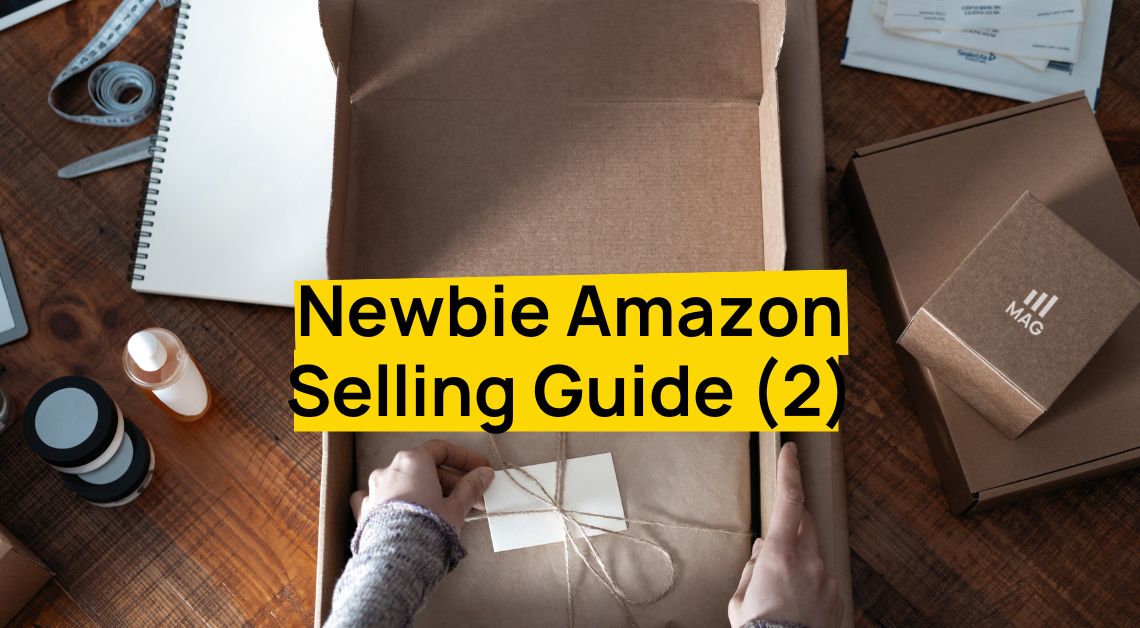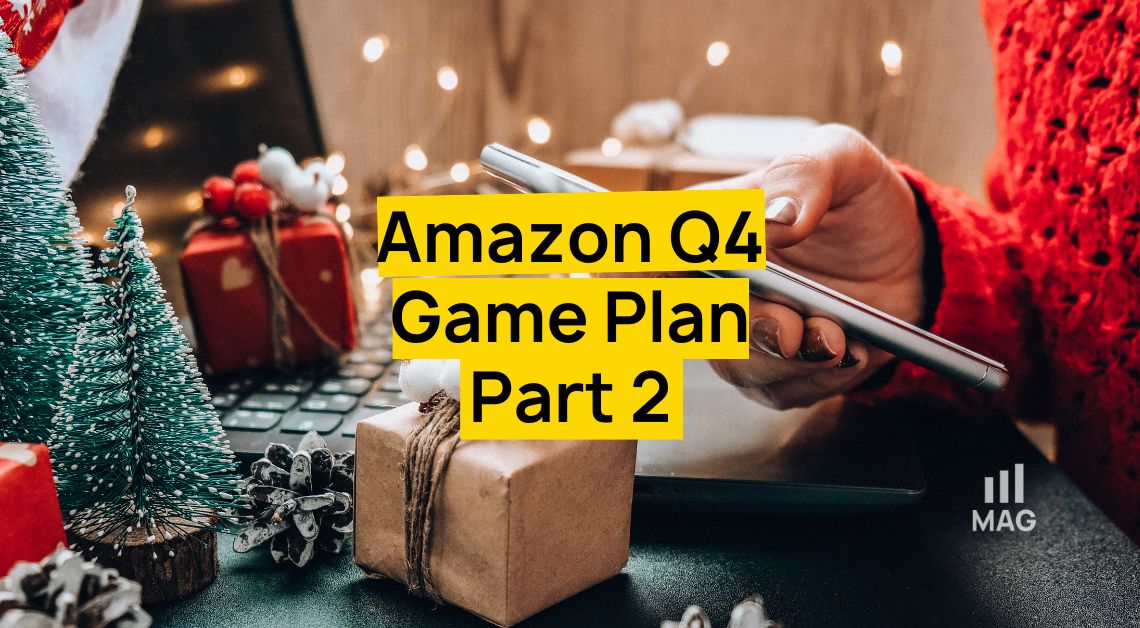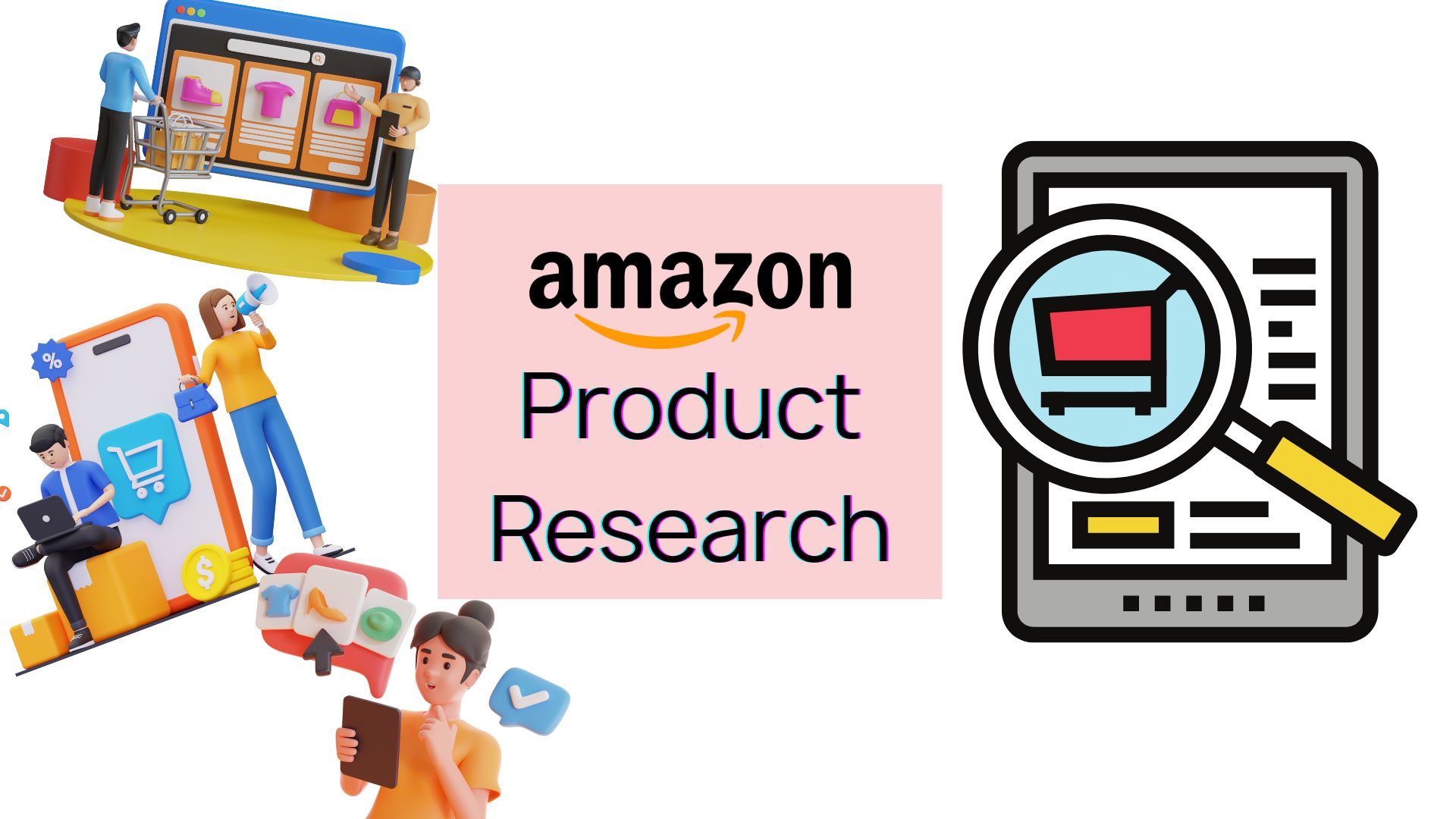Break free from the commodity trap: Launch a profitable Amazon Private Label business in 2024 and own the market, not just a niche!
Sick of competing in a sea of identical products with razor-thin margins? Amazon private label can be your ticket to brand ownership, higher profits, and customer loyalty.
But here’s the reality: it’s not a walk in the park. Competition is fierce, and strategies need to adapt with the ever-changing Amazon landscape.
Here’s the good news: with the right approach, Amazon private label can still be a goldmine in 2024. This guide equips you with the knowledge and actionable steps to find success.
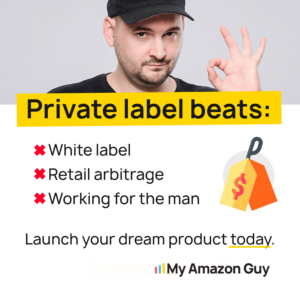
What is Amazon Private Label: Some Interesting Facts
More than half (54%) of Amazon sellers utilize the private label strategy to develop and market their own brands and product lines.
Nearly 60% of third-party sellers on Amazon have taken the initiative to produce and brand their own products through the private label model.
An overwhelming 92% of sellers in the Home & Kitchen category have designed and launched their own private label products.
What Does Private Label Mean On Amazon
Private label on Amazon involves products made by a third-party manufacturer, then branded, marketed, and sold by a different company. Sellers can source everyday items from platforms like Alibaba or AliExpress, rebrand them with their own logo and packaging, and sell them as unique products.
This model allows sellers to
- control branding,
- build customer loyalty, and
- potentially increase profit margins.
How Does Amazon Private Label Work
- You source a product: Find a product to sell that has demand but low competition.
- You design your brand: Create a unique logo, name, packaging, and brand voice.
- You find a supplier: Partner with a manufacturer to produce your branded product.
- You sell on Amazon: List your product with high-quality photos and optimized descriptions.
- You build your brand: Earn customer loyalty through quality products and positive experiences.
- You scale for success: Expand your product line and optimize operations for long-term growth.
How Amazon Private Label Differ From Wholesale Business
Amazon Private Label
Launching a product with your own label and branding
Requires investment in product development, marketing, and advertising
Can lead to high margins (20-50%)
Requires more upfront investment
Can be a good fit for those with more capital and time to invest
Pros
- Asset Building: With private label, you build a valuable brand asset that can be sold or licensed in the future.
- Full Control: You have complete control over your brand, including branding elements, supply chain, and sales price.
- Buy Box Ownership: As a private label owner, you can enroll in Amazon Brand Registry to protect your buy box and prevent hijacking.
- Product Portfolio Expansion: You can easily add complementary products to your existing line, growing your profitability over time.
- Higher Margins: With high-quality, differentiated branded products, you can protect your profit margins and make more money.
Cons
- More Setup: Creating a private label product requires more setup, including branding, packaging, and advertising.
- Advertising: Developing an advertising skillset for online marketplaces can be a learning curve.
- Time-Intensive: Launching a private label product requires more time and effort than selling on Amazon wholesale.
- Long Lead Times: Sourcing products from manufacturers overseas can take 2-6 weeks, making it challenging to manage cash flow.
- Patience Required: Building a successful private label business takes time, often 3-6 months before seeing a profit.
Amazon Wholesale
- Selling products from existing brands through Amazon
- No upfront investment in product development or marketing
- Lower margins (15-30%)
- Requires less upfront investment
- Can be a good fit for those with limited capital or less time to invest
Pros
- Less Setup: Wholesale products usually come with existing listings, reducing setup time and costs.
- Less Time-Intensive: Wholesale sales require less initial effort, as you don’t need to create listings or build an audience.
- Quick ROI: With faster lead times, you can list products and start selling quickly, achieving a quick return on investment.
- No Advertising: You don’t need to spend money on advertising to drive traffic to your listings.
- Smaller Budget: Wholesale products often require smaller initial orders and fewer upfront costs.
Cons
- Minimal Assets: Wholesale businesses focus on short-term sales, making it difficult to build long-term value.
- Buy Box Share: Amazon owns the product listings, giving you limited control over who can sell on the same listing.
- Margin Compression: More sellers competing for sales can lead to lower profit margins.
- Building Partnerships: Building relationships with suppliers can be challenging and time-consuming.
- Required Licenses: You may need licenses or permits to sell products wholesale, adding extra costs and complexity.
How To Start Amazon Private Label
Meet Requirements To Sell Private Label Products
Selling private label brands on Amazon requires strict adherence to safety and compliance regulations. As the seller, you are responsible for ensuring your products meet all local, federal, and Amazon’s specific policies.
Amazon verifies compliance throughout the process:
- Product Development: Design, materials, manufacturing, and testing are reviewed to ensure adherence to safety protocols.
- Product Listing: Updated compliance documents are required annually for continued listing approval.
- Changes and Regulations: Product updates or regulatory shifts may require additional testing and verification.
Key points to remember:
- Use approved labs: Test reports must come from Amazon-approved third-party labs.
- Stay informed: Amazon will notify you 90 days before compliance approval expires or if changes require additional testing.
- Meet deadlines: Failing to submit updated compliance documents can lead to listing removal and halted purchases.
Facing some Amazon compliance issues? Learn how to deal with them by reading our guide.
Perform Product Research
Researching the right product is crucial in starting an Amazon private label business. This process requires careful analysis to avoid selecting a product that other sellers are offering that may not attract buyers.
Sample Criteria for Product Research:
- Price Range: $20-$70
- Monthly Sales: Minimum of 300 sales
- Number of Reviews: Average of 500 or less for the top 10 products
- Product Rating: Aim for products with ratings up to 4 stars to identify improvement opportunities
- Competitor Listing Quality: Use tools such as from Jungle Scout and Seller App to check the quality of competitor listings
Decisions should be driven by data rather than personal preferences. Begin by brainstorming ideas based on hobbies, but always validate them by examining how similar products perform on Amazon. Following these criteria helps in identifying high-demand, low-competition products, setting a solid foundation for a successful private label brand.
Here is a product research article to guide you.
Choose A Supplier
Identifying the right supplier is crucial for your Amazon private label success. Here’s how to navigate the search:
Two Sourcing Options:
- Direct Manufacturing: Secure a private-label product directly from a manufacturer for greater control.
- One-Off Orders: Use platforms like AliExpress for single purchases, avoiding direct manufacturer interaction.
Recommend Method: Go directly to the manufacturer for:
- Quality Control: Request samples to assess quality before bulk purchases.
- Long-Term Partnership: Build a strong relationship for consistent quality and support.
Choosing the Right Partner:
- Experience: Look for suppliers with experience in your product category.
- Communication: Prioritize clear communication through phone calls and ideally, on-site visits.
- Cost-Quality Balance: Don’t compromise quality for a lower price.
- Minimum Order Quantities (MOQ): Understand the minimum order requirements.
- Quality Assurance (QA): Inquire about their QA process to minimize defects.
Learn more about product sourcing by reading this blog post.
Develop Your Branding of Private Label Products on Amazon
Selling private label gives you the power to create a unique brand, separate from the competition. This not only helps you stand out but also increases your chances of winning the coveted Buy Box on Amazon.
Here’s how branding strengthens your private label business:
- Differentiation: Your brand design, packaging, product benefits, and story set you apart from competitors.
- Value Proposition & Story: These elements add personality and emotional connection to your product.
- Consistent Design: Maintain consistent colors, fonts, and design elements across your brand for increased recognition.
- Customer Focus: Every branding decision should prioritize what resonates with your target customer.
Intellectual Property Rights
Ensure your private label products comply with intellectual property rights, including trademarks and patents. Address this before sourcing to prevent costly legal issues later.
By investing in a strong brand identity, you’ll be well on your way to building a loyal customer base on Amazon.
Our Amazon Agency can help develop a strong brand and logo for you, check out our Brand Guidelines.
Choose Fulfillment Method of Amazon Private Label Products
When selling on Amazon, you have two fulfillment options:
- Fulfillment by Merchant (FBM):
- You manage everything – storage, packaging, shipping, and customer service.
- Ideal for low-volume sellers or those with unique packaging needs.
- Fulfillment by Amazon (FBA):
- Amazon handles storage, packaging, fulfillment, and customer service for a fee.
- Ideal for a hands-off approach and potential for faster shipping times with Prime benefits.
To help you choose between the Amazon FBA private label and FBM private label, read our comprehensive article, What’s The Difference Between FBA And Seller: Which Suits Your Business Better?
Manage Inventory
Maintaining optimal inventory levels is crucial for your private label success. Avoid stockouts that disappoint customers or excess inventory that strains your resources.
Here’s why inventory management matters:
- Prevent Stockouts: Ensure you have enough product to meet customer demand and avoid lost sales.
- Minimize Excess Inventory: Reduce storage costs and prevent dead stock that ties up capital.
Inventory Management Tools:
- Utilize tools like Amazon’s Inventory Management to forecast sales and optimize stock levels.
- Regularly monitor inventory levels and adjust ordering patterns as needed.
Need help in managing your inventory? Here’s a guide for you.
Launch Your Product
Essentials:
- UPC Code: Acquired for product identification.
- Trademark (optional): Secures your brand name.
- Brand Registry: Enhances control and protection on Amazon.
Listing Optimization:
- Created: Your product listing is live on Amazon.
- SEO Keywords: Optimized for relevant search terms.
- Listing Copy: Compelling descriptions that convert.
- PPC Campaigns: Ready to drive traffic and sales (optional).
Visual Appeal:
- Professional Images: High-quality photos showcase your product.
- A/B Tested Main Image: Optimize your main product image for clicks.
Content & Fulfillment:
- A+ Content: Enhanced product descriptions for a richer experience (optional).
- Product at Amazon: Your inventory is ready for fulfillment.
The Big Day:
- Launch Date Set: You’ve chosen the perfect day to unveil your product.
Implement Strategic Pricing
Resist the urge to launch at full price! Instead, consider a strategic discount to generate initial sales and reviews.
The Ideal Launch Discount:
- Week 1: Aim for a significant discount, around 50% off your target price.
- Reasoning: Attract customers and overcome the hurdle of zero reviews with a compelling offer.
Exceptions:
- Cultural/Trend Products: High demand might allow for a launch closer to your target price.
Gradual Price Increases:
- Week 2: Increase price by 10% of the discount.
- Weeks 3-7: Implement smaller price increases (around 5% each week).
- Reasoning: Amazon’s algorithm favors gradual price adjustments to maintain Buy Box eligibility.
Target Price:
- Ideally, reach your target price by week 8.
- Be flexible – adjust based on sales performance and stock levels.
Black Friday Strategy:
- Consider raising prices on high-demand products to maximize profit margins.
Market And Promote Your Product
Once your private label product is launched, it’s time to generate excitement and drive sales! Here are some key marketing strategies:
- Amazon Advertising: Utilize Amazon PPC (pay-per-click) ads to target relevant keywords and reach potential customers actively searching for similar products.
- Social Media Power: Leverage social media platforms like Facebook, Instagram, or TikTok to showcase your product’s benefits and build brand awareness. Run targeted ads or collaborate with influencers to reach a wider audience.
- Embrace External Traffic: Amazon welcomes external traffic! Promote your product on your website, email list, or other channels to drive qualified visitors to your Amazon listing.
What Private Label Products To Sell On Amazon
Looking for examples of private label products to sell on Amazon? Here are some popular categories and trending items based on Amazon’s Best Sellers list:
- Beauty & Personal Care: Capitalize on the ever-growing demand for beauty products. Think hair care, skincare, makeup, and bath essentials.
- Kitchen & Dining: Everyday kitchenware is a consistent seller. Explore utensils, food storage solutions, appliances, and drinkware.
- Automotive: Help people maintain their cars with in-demand accessories like phone mounts, chargers, organizers, and cleaning supplies.
- Clothing, Shoes & Jewelry: Target specific demographics with comfortable clothing, footwear, and accessories like shapewear, leggings, phone screen protectors, and jewelry storage solutions.
- Electronics: Stay on top of the tech trends with popular electronics like wireless earbuds, phone chargers, fitness trackers, and smart TV accessories.
- Appliances: Small appliances like ice makers, mini fridges, and portable washing machines are popular for dorms, apartments, and convenience.
Challenges To Expect When Selling Amazon Private Label Products
Needing a Specific Number of Product Reviews
Challenge: Many believe a high number of reviews is crucial for sales and conversion.
Solution: Focus on sales velocity rather than review quantity; prioritize product quality and customer satisfaction.
Chinese Suppliers Will Always Try to Exploit You
Challenge: Fear of being scammed or receiving poor quality products from Chinese suppliers.
Solution: Build strong, long-term relationships with suppliers based on trust and clear communication to ensure quality and reliability.
Private Labeling Automatically Builds a Brand
Challenge: Assuming that slapping a logo on a product equates to brand building.
Solution: Invest in custom packaging, branding elements, and customer engagement strategies to genuinely differentiate and build a recognizable brand.
No New Niches Left for Private Labeling
Challenge: Belief that all profitable niches are saturated or overly competitive.
Solution: Explore niche markets within broader categories; focus on unique product variations, add-ons, or underserved customer segments to find profitable opportunities.
Amazon’s New Reviews Policy Makes Product Launches Difficult
Challenge: Confusion over Amazon’s updated review policies and their impact on launching new products.
Solution: Prioritize organic sales and customer satisfaction over relying on review manipulation tactics; focus on genuine customer feedback and quality product offerings.
Private Labeling Eliminates Competition
Challenge: Assuming private labeling prevents competitors from entering the market.
Solution: Differentiate through product customization, unique selling propositions, and building a strong brand identity to stand out in competitive markets.
Needing to Sell Across Every Amazon Marketplace
Challenge: Pressure to expand sales to multiple Amazon marketplaces globally.
Solution: Focus on dominating your primary marketplace before expanding; evaluate additional marketplaces based on profitability and logistical feasibility.
Buy Box Success Is Solely Price-Driven
Challenge: Belief that winning the Buy Box is solely determined by price competitiveness.
Solution: Improve seller metrics, such as fulfillment methods and customer service, to enhance Buy Box eligibility; use competitive pricing strategically within a tiered seller rating system.
Merchant Fulfillment Is Suitable for Starting Out
Challenge: Considering self-fulfillment to save costs or avoid Amazon’s FBA fees.
Solution: Utilize FBA for reliable, Prime-eligible shipping to boost customer trust and sales; prioritize efficiency and customer experience over initial cost savings.
Over-Reliance on Software Tools
Challenge: Overuse of unnecessary software tools without clear business benefits.
Solution: Adopt software tools strategically based on specific business needs; prioritize data accuracy and actionable insights over tool accumulation.
Mandatory Private Labeling
Challenge: Belief that every product must be private labeled to succeed on Amazon.
Solution: Explore opportunities to sell non-branded, niche products; focus on market demand and differentiation rather than private labeling as a necessity.
Amazon’s Treatment of Sellers
Challenge: Concerns over Amazon’s support and policies favoring large brands over third-party sellers.
Solution: Stay informed about Amazon’s policies and diversify sales channels; focus on optimizing operations and customer service to mitigate platform risks.
Amazon Private Label Business Q&As
Yes, it’s possible to achieve significant profits with Amazon private labeling through effective execution. However, success isn’t guaranteed by default. Profitability hinges on several factors:
- Choosing products with substantial demand
- Creating attractive product presentation and packaging
- Pricing strategically to boost sales while maintaining healthy margins
- Making substantial investments in marketing and promotional activities
- Diligently monitoring and optimizing product listings
When you engage in private label selling, you usually place a large initial order with a supplier and ship that inventory to an Amazon FBA fulfillment center. In dropshipping, however, you do not pay for any inventory until you receive an order from a customer.
There isn’t a single “best” country to sell private label products on Amazon. The optimal location depends on several factors, including:
- Your Target Audience: Who are you trying to reach? If your ideal customer is in the United States, selling on Amazon US makes the most sense.
- Product Category: Certain regulations or product demands might be specific to a country.
- Business Location and Logistics: Where are you situated? Shipping costs and lead times can be affected by your location and the distance to fulfillment centers.
- Language and Cultural Nuances: Understanding the target market’s language and cultural preferences is crucial for successful marketing and branding.
However, some of the most popular countries for Amazon sellers include:
- United States: This is the largest Amazon marketplace with the highest potential customer base. However, competition is also fierce.
- United Kingdom: The second-largest English-speaking market with a well-developed e-commerce ecosystem.
- Germany: A strong European market with a growing online shopping population.
- Japan: A highly tech-savvy market with a strong brand loyalty culture.
Here’s a breakdown of some factors to consider for each country:
US: Ideal for reaching a vast audience, but expect high competition.
UK: Great option for English-speaking and European markets, but consider potential regulatory differences.
Germany: Strong European market with a specific language and potentially different regulations.
Japan: High-tech market with strong brand loyalty, but language barrier and unique cultural preferences require careful consideration.
Launch Your Thriving Private Label Brand on Amazon in 2024
While the Amazon marketplace can be competitive, the potential rewards for private label sellers remain significant. This guide equips you with the knowledge and strategies to navigate the landscape and build a successful brand.
However, navigating the complexities of Amazon and achieving long-term success requires expertise. Don’t go it alone!
Partner with a Proven Amazon Agency
Our experienced Full Service Amazon agency specializes in helping businesses like yours launch and scale profitable private label brands.
Ready to take your Amazon business to the next level?
Contact our Amazon agency today for a free consultation and discover how we can help you build a thriving private label brand and achieve lasting success on Amazon.


